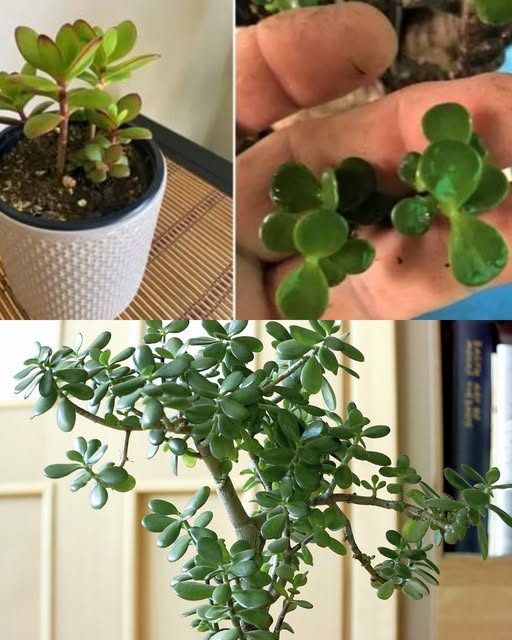ADVERTISEMENT
Jade Tree Care Needed to Make It Eternal: Tips for a Thriving Plant
The Jade Tree, also known as Crassula ovata, is a popular succulent known for its thick, glossy leaves and tree-like appearance. Often referred to as the money tree or friendship tree, this hardy plant is prized for both its beauty and its low-maintenance nature. With the right care, a Jade Tree can live for decades and even thrive for generations, making it an eternal symbol of luck, prosperity, and longevity.
In this article, we will explore how to care for a Jade Tree to ensure it remains healthy, vibrant, and strong for many years to come. Whether you’re a seasoned plant enthusiast or a first-time gardener, these tips will help your Jade Tree flourish.
Understanding the Jade Tree
The Jade Tree is a succulent native to South Africa. It is known for its fleshy, oval leaves that are a rich green color, sometimes tinged with red edges in bright sunlight. The plant can grow into a small tree, reaching up to 3 feet tall indoors, with a trunk that becomes woody over time.
While Jade Trees are incredibly resilient and low-maintenance, they do require some specific care to keep them thriving. Here’s how you can create the perfect environment for your Jade Tree.
1. Light Requirements
Jade Trees thrive in bright, indirect light. They need a lot of sunlight to maintain their vibrant color and compact growth. A location near a south or west-facing window is ideal, as these areas receive the most sunlight throughout the day.
However, it’s important to avoid direct sunlight for extended periods, as this can scorch the leaves. If your Jade Tree is showing signs of sunburn (such as brown, dry spots), move it to a location with more filtered light.
Tips for Light Care:
- Aim for 4 to 6 hours of indirect sunlight each day.
- In low-light conditions, your Jade Tree may become leggy, with long spaces between the leaves. If this happens, move the plant to a brighter location.
2. Watering Your Jade Tree
Jade Trees are succulents, which means they store water in their leaves and are highly tolerant of drought conditions. Overwatering is the most common mistake made when caring for Jade Trees. Too much water can cause root rot and other fungal issues.
The best rule of thumb for watering your Jade Tree is to let the soil dry out completely between waterings. Water thoroughly, but only when the top 1-2 inches of the soil are dry to the touch.
Tips for Watering:
- During the growing season (spring and summer), water every 2-3 weeks.
- In the fall and winter months, reduce watering frequency, as the plant enters a dormant period.
- Always check the soil with your finger before watering. If it feels moist, hold off on watering for a few more days.
- Ensure that the pot has proper drainage holes to allow excess water to escape, preventing water from collecting in the bottom and causing root rot.
3. Ideal Soil Conditions
Jade Trees prefer well-draining soil that mimics the dry conditions of their native environment. You can use a cactus or succulent potting mix, or create your own by mixing regular potting soil with sand or perlite to improve drainage.
Tips for Soil Care:
- Avoid dense, moisture-retaining soils that can cause the plant to sit in water.
- Repot your Jade Tree every 2-3 years to refresh the soil and promote healthy growth.
4. Temperature and Humidity
Jade Trees prefer warm temperatures and do best in environments between 65°F and 75°F (18°C to 24°C). While they can tolerate a range of temperatures, they do not thrive in areas that are too cold.
In fact, the plant can suffer if exposed to temperatures below 50°F (10°C), so it’s important to keep your Jade Tree away from drafty windows or cold spaces, especially during the winter months.
Jade Trees also appreciate low to moderate humidity levels, so they’re perfect for most indoor environments.
Tips for Temperature and Humidity:
- Keep the Jade Tree in a warm area that doesn’t experience sudden temperature fluctuations.
- If your home tends to be very humid, make sure the plant is not sitting in a spot with excessive moisture in the air.
